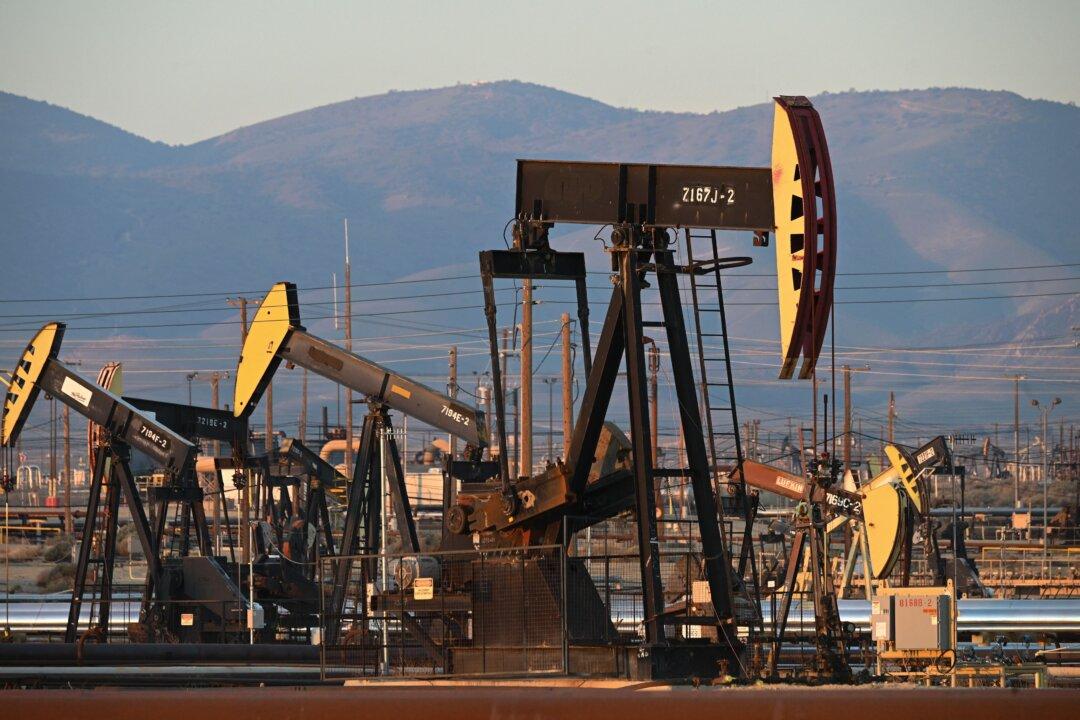“We will frack, frack, frack, and drill, baby, drill,” former President Donald Trump said in an Oct. 18 speech at a Detroit event.
Now that Trump has secured a second presidential term, market watchers are examining his potential effect on the energy sector, from crude oil and natural gas to solar and wind.
The Trump Effect on Oil and Gas
Over the past week, U.S. crude oil prices and natural gas prices have been bumpy.At the market close on Election Day, Nov. 5, a barrel of West Texas Intermediate crude oil, for example, traded at about $72 on the New York Mercantile Exchange. Nearly a week later, oil prices have slumped below $69.
Natural gas prices have seesawed, though they initiated a fierce rally to start the trading week. Prices rallied 9 percent in intraday trading on Nov. 11.
Phil Flynn, an energy strategist at The PRICE Futures Group, said the mixed performances have been fueled by the near-term “psychological impact” of “drill, baby, drill.”
“The U.S. oil and gas industry [can] shake off oppressive regulation and start getting back to the business of producing oil based off supply and demand expectations, not making decisions trying to guess what the next regulation is going to be,” Flynn told The Epoch Times.
Estimates for how much extra oil and natural gas will be produced vary.
Flynn said he estimates that the United States could produce an extra 1 million to 2 million bpd in the coming years.
The United States “will retain its role as U.S. oil production grows around 300,000–500,000 barrels per day,” Rob Thummel, the senior portfolio manager at Tortoise Capital Advisors, said in an email to The Epoch Times. In addition, Thummel projected that natural gas production growth could increase by approximately 30 billion cubic feet per day by 2030.
“We believe that economics, not politics, will prevail,” he said in a note. “U.S. oil and gas producers will look to maintain capital discipline and to ensure that global oil and natural gas markets remain balanced and avoid being oversupplied.”
According to experts, regulatory uncertainty has been a major source of consternation for the oil and natural gas sector.
Trump and his team have promised to take action within the Interior Department and other environmental agencies to dismantle energy and environmental regulations. Indeed, boosting fossil fuel production activity on federal lands and waters has been at the core of Trump’s proposed energy policies.

Growth prospects, according to Warren Patterson, the head of commodities strategy at ING, will likely come from onshore crude production on federal lands, effectively reversing Biden’s position.
The current administration decreased lease sales on federal lands and bolstered bond and royalty payments for production on federal land.
But while the president-elect’s administration will adopt friendlier industry policies that could facilitate an acceleration in output, market experts say that prices might be the true driver of production volumes over the next few years.
Based on surveys of producers by the Federal Reserve banks of Dallas and Kansas, oil prices need around $64 per barrel to ensure drilling is profitable.
Adam Ferrari, the CEO of Phoenix Capital Group, noted that there are two ways to examine the industry’s break-even levels. The first is to calculate how much it costs to lift barrels companies have already drilled. The second relates to vertical-well oil production.
“I think most people would argue the range of how much it costs to lift a barrel out of the ground profitably is anywhere from $15 to $60,” Ferrari told The Epoch Times.
He noted that his firm can lift Bakken barrels out of the ground profitably for a cost as low as $20 and “potentially even lower.”
“My view is,” Ferrari added, “$55 is a really good number.”
Seeing Green From All of the Above
In the aftermath of Election Day results, a plethora of renewable-energy stocks tanked, from First Solar (negative 14 percent) to Sunrun (negative 18 percent).The sell-off has been fueled by growing expectations that Trump could eliminate or curtail various government subsidies in the Inflation Reduction Act.
Trump’s second term will stall momentum for the clean energy transition, according to Dan Lashof, the U.S. director of the World Resources Institute.
“President Trump will face a bipartisan wall of opposition if he attempts to rip away clean energy incentives now.”
While there is concern that the future of the renewables sector might be up in the air in a second Trump term, House Speaker Mike Johnson (R-La.) said he accepted that it would be almost impossible to “blow up” much of Biden’s signature climate change legislation.

“Prematurely repealing energy tax credits, particularly those which were used to justify investments that already broke ground, would undermine private investments and stop development that is already ongoing,” 18 Republicans wrote in the August letter. “A full repeal would create a worst-case scenario where we would have spent billions of taxpayer dollars and received next to nothing in return.”
Despite the president-elect’s antagonistic views toward green energy, Adam Ennamli, the chief risk officer at General Bank of Canada, said he does not believe a Trump presidency “would signify the end of the renewable energy sector.”
“The industry has matured significantly and is now largely driven by economic factors rather than solely by federal policy,” Ennamli told The Epoch Times. “While Trump’s administration may roll back certain regulations and subsidies, the fundamental market dynamics favoring renewables are robust.”
In addition, Ennamli said, the renewable energy sector had prepared for different political outcomes by concentrating on state-level markets, expanding new private financing structures, using storage solutions, and diversifying supply chains.
“While a second Trump term may present challenges for the renewable energy sector through regulatory rollbacks and reduced federal support, it is unlikely to halt its growth, viability, or value promise,” he said. “The industry’s maturity, driven by economic fundamentals and state-level initiatives, positions it well to adapt and thrive even amid political shifts.”
There has been speculation that the White House could distribute the remaining Inflation Reduction Act grant funds ahead of Inauguration Day, two months away.
Trump has pledged to cancel all unspent funds from the Inflation Reduction Act. However, even if Trump were to roll back many IRA tax credits, grants, and other subsidies, much of the funding has already been deployed.
So far, the administration has awarded $90 billion in grants to climate and clean energy projects, accounting for about three-quarters of the bill’s grant funding.
Neil Winward, CEO at Dakota Ridge Capital, said he believes a more likely scenario is triggering a congressional review.
As part of the Congressional Review Act, Congress has the power to review and potentially overturn new final federal regulations imposed by government agencies.
“I think one of the things that an incoming administration has the ability to do is to freeze regulations within some windows of time,” Winward told The Epoch Times. “It gives them 60 days to completely obliterate an entire regulation, a very blunt instrument.”
A more likely scenario, according to experts, is that the incoming administration would adopt an all-of-the-above approach to energy policy, embracing a diverse array of fuel sources to bring down prices and assert America’s dominance in the global economy.
“A Trump administration has to be promoting all the above energy forms because the only thing that really digs us out of the economic issues that we’re facing with the debt burden that we have is something of an energy miracle,” Winward said.
The United States will likely need to employ various energy sources, as power demand is projected to reach record highs in 2024 and 2025, according to the Energy Information Administration.







